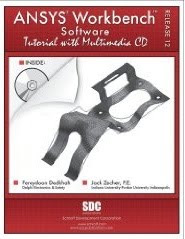Here is the second installment on our turbine blade analysis discussion. (Part one is here: Turbine Blade Modal Analysis)
This time I will focus on a dynamic stress analysis. Once you have created the interference diagram that was discussed in my last post, you will be able to identify conditions where resonance may occur. Typically I find any case where the resonant condition is less than 3% different from the forcing frequency (impulse line on interference diagram). I then run a dynamic stress analysis on each of those conditions using BLADE.
Resonant conditions were covered in my last post, but I think it is important enough to summarize it here. The dynamic amplitude and stress response of a structure depends on the following factors:
This time I will focus on a dynamic stress analysis. Once you have created the interference diagram that was discussed in my last post, you will be able to identify conditions where resonance may occur. Typically I find any case where the resonant condition is less than 3% different from the forcing frequency (impulse line on interference diagram). I then run a dynamic stress analysis on each of those conditions using BLADE.
Resonant conditions were covered in my last post, but I think it is important enough to summarize it here. The dynamic amplitude and stress response of a structure depends on the following factors:
1. The natural frequencies of the system
2. The damping properties
3. The forcing amplitudes or stimulus ratio, defined as the ratio of the dynamic forces to the static steam loads on the blade
4. The phase angles, defined by the harmonic content (nodal diameter) of the modes.
The steam flow field is non-uniform due to nozzle asymmetry and irregular spacing geometry within the steam flow path. Other factors may include geometry variations of wakes, leakage flows and disturbances in the turbine structure such as joints and steam extractions. Since so many variables are involved and some of the fluid phenomena are still unknown, it is extremely difficult to estimate accurately the dynamic forces and consequently the stimulus ratio.
When calculating the alternating stresses using BLADE, I typically assume a 1% stimulus ratio so that results can be easily scaled. In practice the stimulus ratio varies for different machines and for different blade rows. When BLADE calculates these stresses it assumes that the system is at a resonant condition. Therefore, the resonant stresses that are output by BLADE need to be detuned (i.e. reduced) if the particular stimulus is not precisely at resonant frequency. For example let’s say the conditions that were selected to run a dynamic analysis on were within 1% of resonance and this occurs at 3500 Hz. This could lead to a significant detuning since the forcing frequency would be 35 Hz away from resonance.
The detuning of these resonant stresses is accomplished through the transmissibility function or sometimes referred to as the magnification factor. A derivation of the transmissibility function can be found in a mechanical vibrations text typically in the harmonic vibration chapter. For convenience here is the final result:
Where:
sd= Dynamic Stress
sr= Resonant Stress
h=Frequency Ratio (excitation frequency/natural frequency)
z =Critical damping ratio
Once the stress values are detuned you will now know the frequency and nodal diameter for each possible resonant condition and the dynamic stresses that occur there. With this you will be able to judge if this near resonant condition is significant and if a design needs to be modified to reduce the stresses or shift the frequencies to detune the resonant condition.
Thanks for reading and welcome your comments and suggestions.




